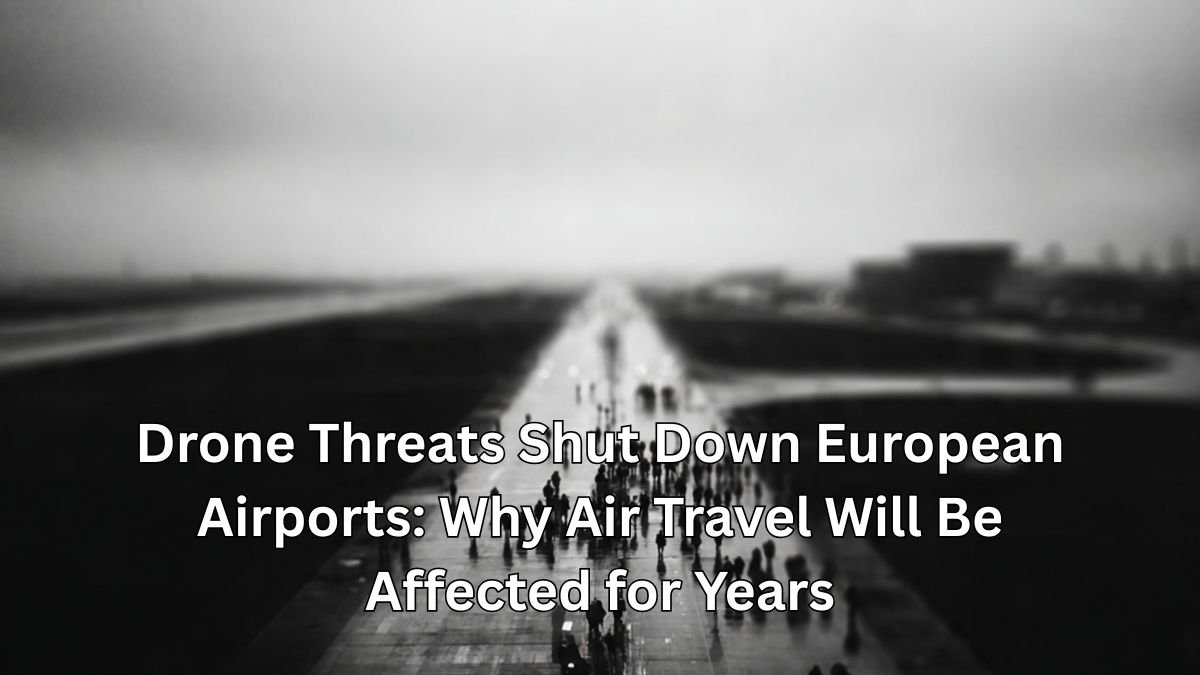COPENHAGEN/OSLO — Europe’s skies are under threat, and the recent wave of drone incursions that forced major airports in Copenhagen and Oslo to shut down has revealed a dangerous vulnerability that experts fear could plague the region’s air travel for years. These coordinated incidents, which stranded thousands of passengers and disrupted hundreds of flights, underscore a new era of “hybrid warfare” targeting critical civilian infrastructure.
Double Airport Shutdown and Widespread Chaos
The alarming disruption began on the evening of Monday, September 22, 2025.
- Copenhagen Airport (CPH): At approximately 8:30 p.m. local time, authorities at Denmark’s busiest airport detected the presence of multiple, large, unidentified drones flying within restricted airspace. All air traffic was immediately halted. The closure lasted nearly four hours, resulting in a chaotic scene where 77 flights were canceled and 217 flights were delayed. Around 35 flights were forced to divert to nearby airports in Sweden, including Malmö and Gothenburg. Police described the operators as “capable actors,” suggesting the individuals possessed the technical skill and intent to cause maximum disruption.
- Oslo Airport (OSL): Hours later, Norway’s Oslo Airport also faced a temporary shutdown due to another drone sighting, forcing incoming flights to divert and further exacerbating the travel chaos across Scandinavia.
The scale of the disruption highlighted how vulnerable major transport hubs are to small, relatively cheap, unmanned aerial vehicles.
The Hybrid Attack: A New Threat Model
Danish officials did not mince words when describing the nature of the incursions. The Prime Minister called the incidents a “serious attack on critical Danish infrastructure” and subsequently referred to the drone flights as part of “hybrid attacks” aimed at spreading fear and disrupting the country. The pattern of multiple, simultaneous sightings across several Danish airports, including the military air base in Aalborg, suggested a professional and systematic operation.
While Russia firmly denied any involvement, calling the incidents a “staged provocation,” the sightings come amid heightened regional anxiety following a series of Russian airspace violations in NATO countries, including drones over Polish airspace and fighter jets crossing into Estonian airspace. The concern is that the drones are being used to test NATO defenses and sow instability in the region.
Why This Problem Will Persist
The drone menace is not a one-off event. Security experts and officials believe the disruption will continue for years due to several key factors:
- Detection Difficulty: Many commercial and small military drones are made of materials like plastic or fiberglass, making them hard to detect with conventional, metal-focused radar systems. Their slow, low-altitude flight paths often allow them to bypass defenses designed for fast-moving aircraft.
- Evolving Tactics: The use of drones is a cost-effective form of “grey zone” warfare. It is a complex technological, financial, and bureaucratic challenge to counter, requiring a massive investment in new, integrated, real-time counter-drone technologies—often dubbed a “drone wall.”
- Local Launch Sites: Authorities suspect the drones were launched locally, not flown over long distances. This means operators can be inside a country, making detection and interception of the pilot far more difficult.
In response, European nations, including Denmark, are urgently discussing new legislation and technology to allow infrastructure owners to “detect and neutralize” drones, including potentially shooting them down. However, the complexity of a coordinated defense against this low-tech, high-impact threat suggests that intermittent airport closures and air travel disruption will remain a reality in Europe for the foreseeable future.
Conclusion
The recent shutdowns at Copenhagen and Oslo airports serve as a stark warning: the threat posed by malicious drone activity is evolving rapidly and has the power to severely disrupt global commerce and citizen movement. While European authorities are scrambling to implement an integrated defense, the simplicity and low cost of drones mean that the fight to secure the skies over critical infrastructure is a long-term battle. Passengers across the continent must be prepared for the possibility of continued intermittent delays and cancellations as security forces adapt to this persistent, modern threat.
Affiliate Disclosure
This article is a news report and does not contain any affiliate links or commercial endorsements.
Disclaimer
The information presented is based on initial reports, statements from European authorities, and expert analysis of the events that led to the temporary closures of Copenhagen and Oslo airports in September 2025. Investigations are ongoing, and the ultimate source and motive behind the drone flights have not been officially confirmed by law enforcement agencies. Any travel plans should be made with an awareness of potential security-related delays in the region.







